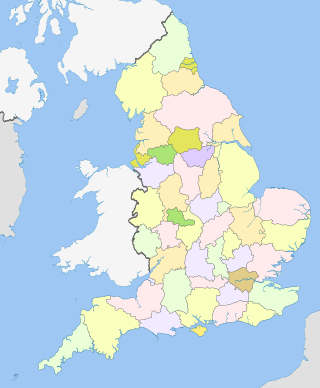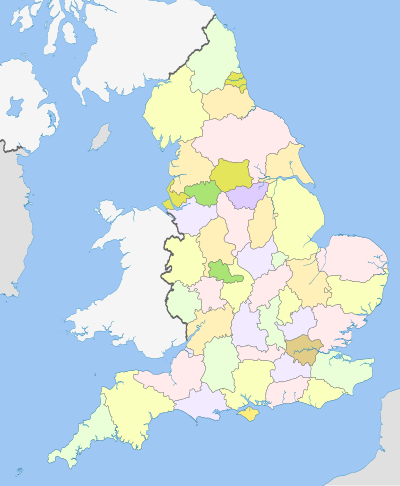
The counties of England are a type of subdivision of England. Counties have been used as administrative areas in England since Anglo-Saxon times. There are three definitions of county in England: the 48 ceremonial counties used for the purposes of lieutenancy; the 84 metropolitan and non-metropolitan counties for local government; and the 39 historic counties which were used for administration until 1974.

Ceremonial counties, formally known as counties for the purposes of the lieutenancies, are areas of England to which lord-lieutenants are appointed. They are one of the two main legal definitions of the counties of England in modern usage, the other being the counties for the purposes of local government legislation. A lord-lieutenant is the monarch's representative in an area. Shrieval counties have the same boundaries and serve a similar purpose, being the areas to which high sheriffs are appointed. High sheriffs are the monarch's judicial representative in an area.

Lieutenancy areas, officially counties and areas for the purposes of the lieutenancies, are the separate areas of the United Kingdom appointed to a lord-lieutenant – a representative of the British monarch. In many cases they have similar demarcation and naming to, but are not necessarily coterminate with, the counties of the United Kingdom.
Chapman codes are a set of 3-letter codes used in genealogy to identify the administrative divisions in the United Kingdom, Ireland, the Isle of Man and the Channel Islands.
England is divided by a number of different regional schemes for various purposes. Since the creation of the Government Office Regions in 1994 and their adoption for statistical purposes in 1999, some historical regional schemes have become obsolete. However, many alternative regional designations also exist and continue to be widely used.
The Custos rotulorum, Latin for "keeper of the rolls" within civil government, is the keeper of the English, Welsh and Northern Irish county records. The Custos is also the principal Justice of the Peace of the county and keeper of the records of the sessions of the local courts and, by virtue of those offices, the highest civil official in the county. The position is now largely ceremonial and generally undertaken by the Lord Lieutenant of the county.
Precedence is the order in which the various corps of the British Army parade, from right to left, with the unit at the extreme right being highest.

This list article collates links to each ceremonial county's settlements population page, and the largest settlement in the county.

The historic counties of the United Kingdom are ancient geographical divisions of the United Kingdom. Although not defined by any one function, over many centuries, various forms of administrative function have been based on them. These have included the areas of parliamentary constituencies, the court of quarter sessions, the areas in which a lord-lieutenant and sheriff serve, territorial units of the Militia, as well as the basis of the original county councils. Although these areas have subsequently changed, the historic counties on which they were originally based have not. The Office for National Statistics recommended them in the Index of Place Names as a stable, unchanging geography which covers the whole of Great Britain.





